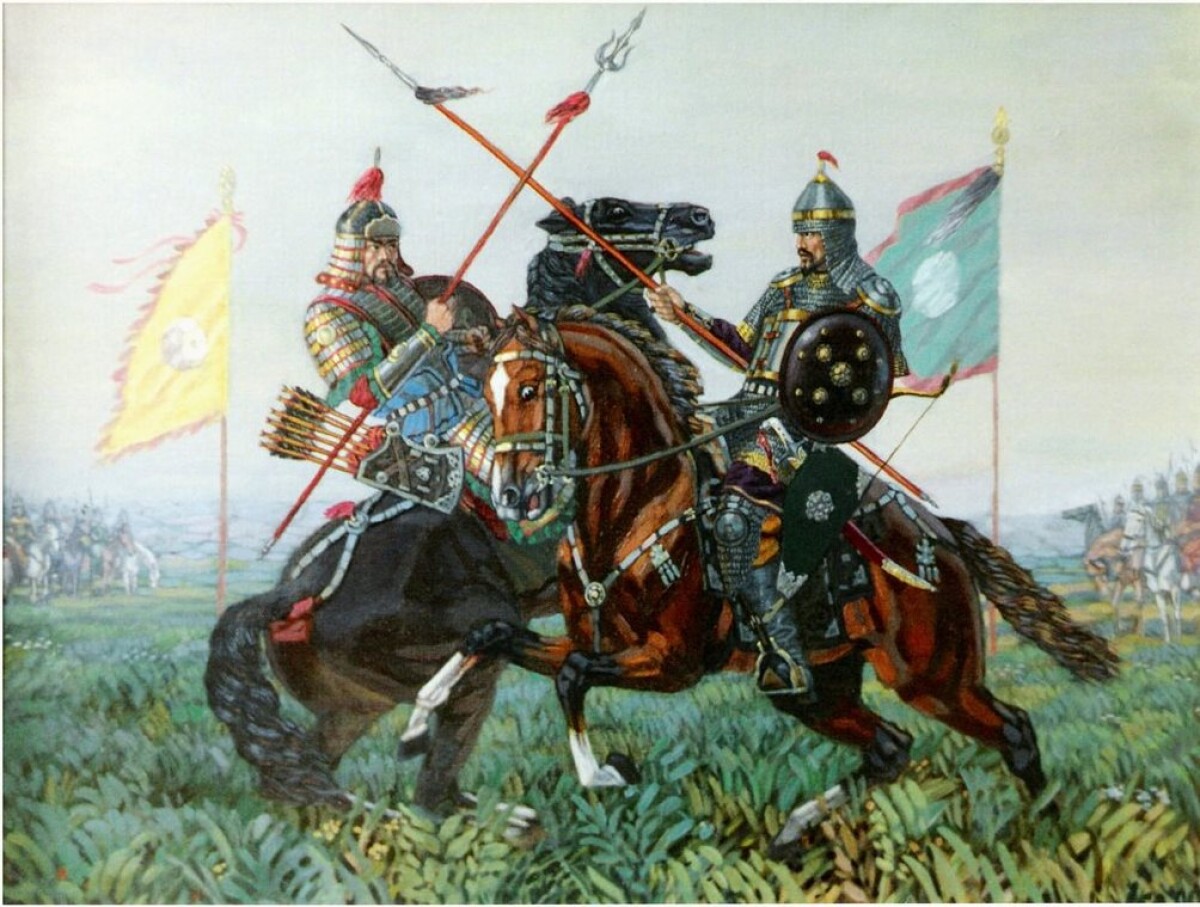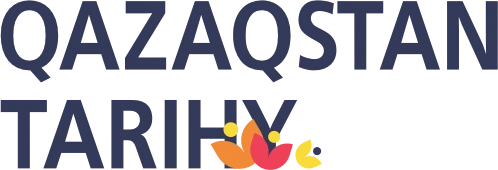
It was not secret that soldiers of steppe were considered as one of the best at all times. What was their organization, arms and how they differ from modern Kazakhstan army? Read below.
1. Army of ancient nomads
War was permanent life companion of ancient nomads. For protection of their lands and expansion of influence on agricultural oases the strong and mobile army was required for them. Such army was organized by the patrimonial principle, and it means that members of one tribe made one division.
Along with a national militia which was formed for opposition to the enemy, uniform for all childbirth, ancient nomads had teams. These divisions submitted to tribal leader (representative of aristocracy). Thanks to existence of own armed forces leaders could initiate own military campaigns which do not have relations to interests of all tribes or union of tribes.
The main power of nomadic army belonged to light-cavalry. To impress their enemies’ riders used dangerous weapon — bow and arrow which allowed carrying battle remaining on horseback. In hand-to-hand fight warriors used short swords or spears.
They did not have armor. Only Scythians of later period could boast bronze amour (katafraktariya).
Nevertheless, ancient nomads of the Kazakhstan steppes represented the powerful opponent. First, such army differed in large number (it included all adult male population). Secondly, nomadic militia consisted of excellent equestrians and archers who got used to burdens and deprivations of a camp life.
2. Army of first Turkic states
The first Turkic states which appeared in the territory of Kazakhstan actively developed metallurgy also were able to extract and process iron. Undoubtedly, this fact influenced on formation of army.
Turkic army relied on force of a regular cavalry which was at their far ancestors — Scythians. However, the armor consisted not of heavy bronze plates, but from iron. Such armor is thinner, easier and most important much more strongly. It is considered that Turkic people did not have infantry as the separate type of military forces.
Except an armor-clad cavalry Turkic governors formed groups of light-armed horse shooters which were gathered from representatives of the subdued people.
As the weapon Turkic soldiers used long light peaks (suitable for cavalry fight), horn onions, swords with long and curved blades, and also knives and daggers.
Speaking about structure of Turkic army, it should be noted that it was divided into right and left wings which consisted of separate groups. Their numerical structure was multiple ten 10 000, 1000, 100, 10 soldiers.
3. Mongolian army
The army was not just a basis of empire created by Genghis Khan, but it was its essence as all power was under construction on the military principles, and each man in it was a soldier.
Mongolian army based on decimal sign. The greatest army unit was tumen, consisting of 10 000 soldiers. Each tumen included 10 mingan (1000 people), one mingan contained 10 zun (100 people) which in turn shared on 10 arban (on 10 soldiers). Such system was used at the time of the early Turkic states, however, Genghis Khan made it comprehensive and applied not only to military, nut also all Mongolian society.
It is interesting that the great Mongolian commander refused the patrimonial principle of the organization of army. Often arbana and zuna consisted of representatives of different groups and tribes, and loyal veteran from among his faithful associates or nuker was appointed the commander. The Mongolian soldiers did not obey the orders of the patrimonial leaders. At the same time orders of the military chief were carried out immediately and implicitly under the threat of the death penalty.
Armed forces of the Mongolian empire were divided into three parts: center, groups of the right and left parts. For planning of a disposition, the direction of the movement and the organization of camps special officers (yurtch) were appointed. Their duty was control over activity of scouts and spies.
Mongolian army used only horse. Bows and arrows were standard arms of the Mongolian light cavalry. Riders of a heavy cavalry armed with a saber, spear, mace or fighting axe. An armour of the Mongolian soldier consisted of a helmet and chain armor. The trunk and head of their horses were also protected by leather armor.
Army of Genghis khan consisted of siege weapons: stones for throw on distance till 400 meters, mechanism and ballista for throwing spear.
4. Kazakh militia
There was no standing army in the Kazakh khanate, except for the small armed groups and teams of certain sultans and khans. In case of external threat, Kazakhs collected a militia (as it was at the time of invasion of Dzhungars). Its groups were formed by the principle of tribal affiliation. Large units subordinated to sultans or famous batyrs.
Each group had the patrimonial sign. Large unions had own banner. For an identification of the soldiers used badges of patrimonial groups, scarfs, tapes or even stripes of a certain color.
The basis of the Kazakh militia was made by light cavalry. Each rider was armed with bows and arrows for conducting distance fight. In near fight soldiers used a cut weapon. In the 18th century each prosperous Kazakh had own firearms. For protection against blows of the opponent the Kazakh rebels put on armors, chain armors and helmets.
5. Armed forces of the Republic of Kazakhstan
The modern Kazakhstan army surpasses all listed above in all respects. Despite the short history, our troops represent well prepared and completed military force capable to provide defense of the country.
The structure of Armed forces of Kazakhstan is formed by conscripts and contract service. However, in short time the state plans to refuse conscription service.
Armed forces of independent Kazakhstan include Forces of air defense, the Navies, Land forces and airmobile troops. The last represent elite of the Kazakhstan army. They submit directly to the commander-in-chief (President of Kazakhstan) and are applied to rapid response to crisis situations.
Geographically divisions of Armed forces are deployed on a regional sign. Regional commands "Astana", "East", "West" and "South" ensure safety of boundaries of our republic.
The state cares that army used latest military equipment. For example, the Kazakhstan army has S-300 surface-to-air missile systems. This installation is capable to hit the targets at various heights and distance to 300 km.
In April of the current year the military aircraft received the new super-maneuverable Su-30 CM fighters which will take part in the parade of troops devoted to the 70th anniversary of the Victory in the Second World War in the order. Kazakhstan Air Force has the world’s largest transport Mi-26 helicopters, capable to transport to 20 000 kg of freight in a cabin.
Modern Armed forces of the Republic of Kazakhstan are not similar to armies of the states of the past eras at all. Today the military personnel has a high-precision latest military equipment, but it not the main thing. Soldiers of the Kazakhstan steppes were and remain strong and fearless defenders of the Homeland.
References:
1. T. Allaniayazov, Military science of nomads of Kazakhstan. 2nd ed., Almaty, 1998, p.140;
2. G. Semenyuk, Weapons, military organization and military art of Kazakhstan in 18th- 19th centuries http://www. reenactor. ru/ARH/PDF/Semenyk. pdf;
3. E. Ospanuly, Military strategy of Nomads — Turkic peoples http://www.kondor-tour.kz/kaz_voennay_strat_koch_turki;
4. G. Coggins, Weapons of great empires. From a spear to an atomic bomb http://www.litres.ru/static/trials/00/61/45/00614595.a6.pdf;
5. A. Domanin, Mongolian empire of Genghis khan’s descendants. Genghis Khan and his successors. M. Tsentropoligraph, 2010, p.428;
6. Armed forces of Kazakhstan — yesterday and today http://articles.gazeta.kz/art.asp?aid=88249;
7. Official website of the Ministry of Defense of Kazakhstan http://mod.gov.kz/.
Inna KUZMENKO

